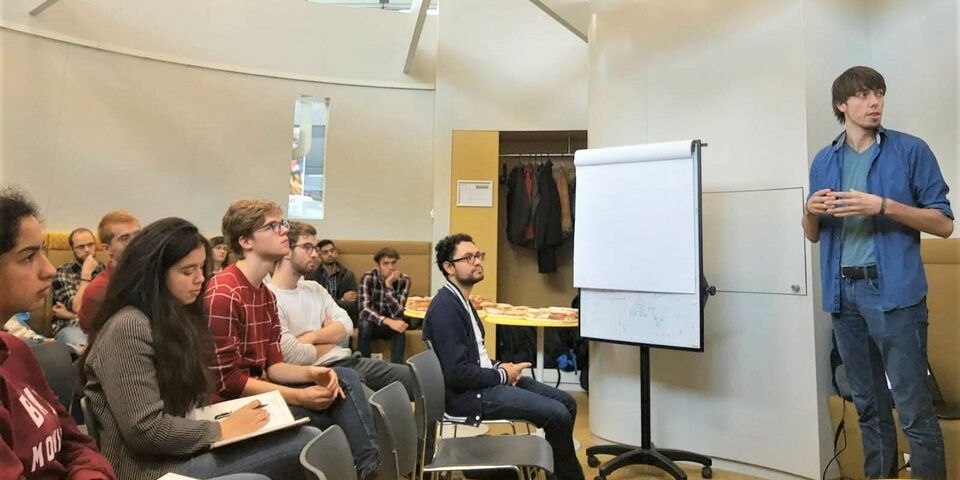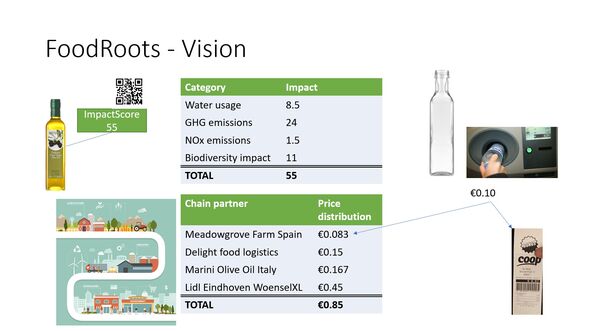How sustainable is a cucumber?
The food industry is responsible for around twenty five percent of greenhouse gas emissions, but it’s often difficult for consumers to determine which food products are ‘green.’ New TU/e student team FoodRoots thinks it has a solution to that problem. Last Wednesday, World Food Day, founder Thomas Fransen presented his plans during a lunch lecture of Technology for Global Development.
Dutch Minister of Agriculture, Nature and Food Quality Carola Schouten calls for a transition to sustainable, ‘circular’ agriculture, Thomas Fransen said during the TGD lecture, but a transition like that is easier said than done. “Even if everyone agrees that something has to be done, taking the first step is not easy under the current system. Especially for farmers, who are dealing with small profit margins, limited negotiation power and a set of watertight rules.”
Nevertheless, the Sustainable Innovation student believes that consumers are willing to spend a little extra for guaranteed sustainably-produced food products. Fransen thinks this is possible by using a sustainability rating that, for example, indicates how much water was used for the growth of a product, how much greenhouse gasses and nitrogen compounds were emitted, and the effect the production process has on biodiversity.
As an outsider without any commercial interests, a student team is perfectly suited for introducing such a sustainability standard, Fransen argued. “Students can set change in motion. Lightyear, which sprang from the Solar Team Eindhoven, is an example of that in the car industry.”
The plan is to develop a digital infrastructure within FoodRoots – which became an official TU/e student team at the start of the month – that traces food products from the stable, field or orchard to the supermarket shelves. Every transport and processing step will also be made transparent, including the corresponding prices along every point of the chain.
“We intend to print an impact score on the packaging material that indicates the product’s level of sustainability,” Fransen explains. “By using a QR code, consumers can see more details, for instance how much money the farmer was paid. That’s usually only a small percentage; a farmer gets no more than ten cents for a cucumber that costs one euro in the supermarket.”
Democratic control
The underlying technology will be a so-called Tangle, an energy-efficient version of blockchain in which each transaction is verified by at least two successive transactions. This has to guarantee that the data on which the sustainability score is calculated is in fact correct, Fransen says. “With the existing labels, you simply have to trust the producer. This system, however, isn’t based on trust, but on a kind of democratic control by all parties involved.”
The founder of FoodRoots mentions, as an example of a smart application, a bottle of olive oil of supermarket chain Lidl. “A QR code informs you that the Spanish olive farmer only got a few cents for the ingredients. You could arrange it in such a way, for example, that the consumer has the option to directly transfer the deposit of say ten cents to this farmer. That way, the farmer will have the means to work in a more sustainable manner. If, instead, you add that ten cents to the selling price, it has to be divided among all parties in the chain, which leaves little for the farmer.”
FoodRoots is still in the early stages of development and is looking for enthusiastic students to help realize the plans described above. Anyone interested can contact founder Thomas Fransen.



Discussion